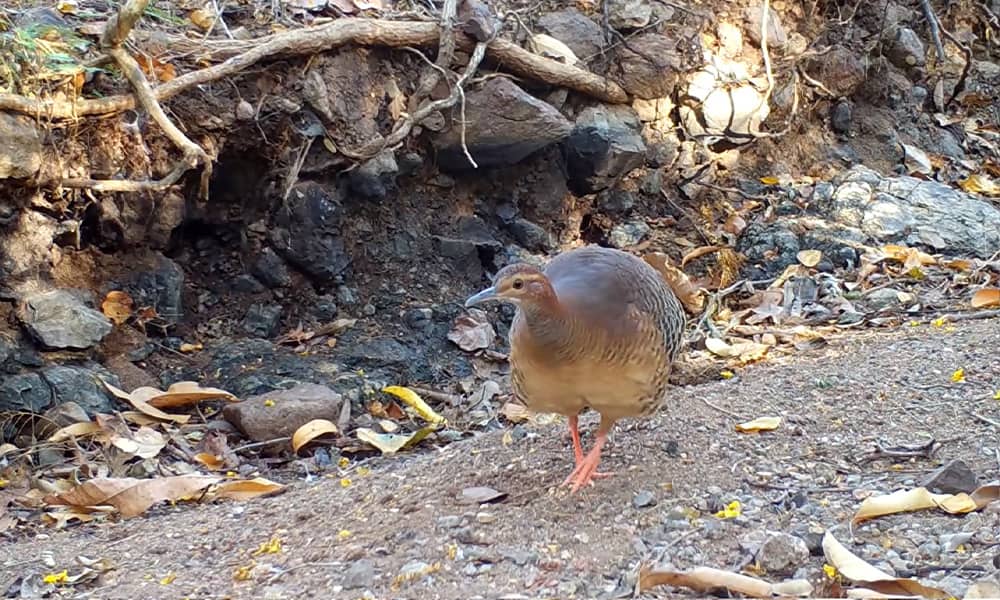Tinamous are plump-bodied ground birds with little heads and slender beaks. Costa Rica is home to five different species of tinamous. Today we meet the one that calls the northwestern part of the country home, the thicket tinamou.
The thicket tinamou (Crypturellus cinnamomeus) has more than one name in Spanish. Bird books, bird guides, and biologists will tell you it’s called the tinamú canelo. That translates to cinnamon tinamou, which makes sense for a light brown bird. Just about everybody else will tell you it’s called the gallina de monte which translates to bush chicken or wild chicken.
To bring a thicket tinamou to mind picture a fat, oversized, tailless dove. They are mostly light brown with heavy black barring across the back and wings. Males have a pure brown chest, while females have some light barring across the chest and throat. Both sexes have bright orange legs.
Thicket tinamous are ground birds. They walk slowly through the vegetation of the forest floor looking for fallen fruits, seeds and insects. They usually travel alone, but I’ve also seen pairs crunching through the leaves of the dry forest together.
Between March and August, one or several females will lay eggs in a nest made by the male. The nest isn’t anything fancy. It can be a depression in some leaflitter or a cozy spot between root buttresses. Once the light pink eggs hatch, the males are responsible for looking after the downy little chicks. I come across a nest once in my travels. There were four little pink eggs at the base of a large tree in Nicoya. I’ll include a photo in the video.
Thicket tinamous have a simple yet beautiful call. Early in the morning and in the evening, they let a loud whistle of a single note lasting a full second. It could be described as boring compared to the varied singing of other species, but for me it’s the song of Guanacaste. I thought maybe it was something that I only connected with until I read this description of tinamou calls in one of my bird books – ‘Purity of tone makes the songs of tinamous arrestingly beautiful.’ That guy gets it, too.
I have had many camera trap projects in Guanacaste, so I’ve seen thicket tinamous many times in the field. They can be quite loud moving through dry leaves, so I often hear them before I see them. Sometimes I’ll startle one in the brush next to a trail, and they’ll explode out of the vegetation in a heart attack-inducing fashion.
Since they’re almost always on the ground, they frequently walk in front of my camera traps. My favorite thicket tinamou videos are the ones that catch them in the act of singing. I’ll include a few of those in the video below.
About the Author
Vincent Losasso, founder of Guanacaste Wildlife Monitoring, is a biologist who works with camera traps throughout Costa Rica. Learn more about his projects on facebook or instagram. You can also email him at: vincent@guanacastewildlifemonitoring.com

